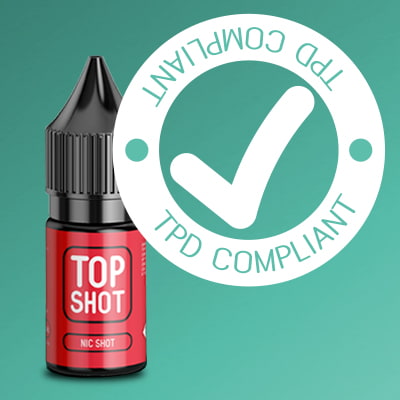
How To Fix The Disposable Vape Problems With Some Simple Regulation Changes!
Introduction
With the upcoming reading of Dr. Caroline Johnson's bill regarding disposable vapes due on March 24th, it is important that we look at both the benefits of disposable vapes and how we can effectively tackle the rising problems without restricting access to the single most effective quitting aid available to adult smokers.
We can all agree that there are two major issues with the disposable vape market that need addressing:
- Recent ASH data shows an increase in youth vaping.
In July 2022, ASH released their updated report: 'Use of E-Cigarettes (Vapes) Among Young People In Great Britain'. This has shown us that the proportion of 11-17 years olds who regularly vape has risen from 3.3% in 2021 to 7% in 2022. Although the report also states that “use among 11-17 year olds who had never smoked remains low and largely experimental”, it is still a worrying increase that should be addressed. - They create a lot of waste.
Unfortunately, the single-use nature of the products is creating additional waste. This of course should always be weighed up against the scourge of cigarette butts and empty cigarette packets left in the street, which has been a significant problem for decades. However, we cannot ignore that these electronic devices do also contain a small lithium-ion battery and often a high proportion of plastic. The public is largely unaware of how to correctly dispose of them, and it is causing problems with fires at landfill sites and recycling centres. They are also being littered in a similar way to cigarette butts.
However, finding a solution to these problems should also take into account the often ignored benefits of the products.
- They have helped hundreds of thousands of adult smokers quit.
The ASH data in August 2022 states: “15.2% of current vapers reporting using disposable vaping products in 2022” and that there were 4.3 million adult vapers at the time. 15.2% of 4.3 million is 653,600 vapers, using these products as of August 2022, and 6 months later it could easily be over a million now. - They are an easy introduction to vaping.
A study published in 2017 that looked into why more smokers were not switching to e-cigarettes found that many of the participants cited that the products were too complicated, and they found it hard to understand things like coil changing, what e-liquid to use, and so on.
Disposable vapes solve this problem very easily. There is no learning curve and they ensure the smoker is able to concentrate on the switching journey, which can be hard enough without running into technology-related barriers. - They are a very low-cost introduction to vaping.
The recent Khan Review: 'Making Smoking Obsolete' talks extensively about the government's 'Levelling Up' white paper, and how smoking prevalence is disproportionately high in many of the poorest regions of the UK. For a smoker looking to try vaping and make the first steps towards switching to a far less harmful product, disposable vapes offer a very low-cost introduction to vaping. The cost of a refillable vape kit, with eliquid and some spare consumables (like coils or pods), could easily cost £25+, whereas a disposable vape can cost £5 or less. - They are perfect for smokers who have dexterity problems.
Although a smaller group, it is extremely important that smokers who suffer from ailments like arthritis, ataxia, tremors, or Parkinson's disease also have access to harm reduction from tobacco. Where these consumers may find refilling e-liquid, changing coils, or changing pods difficult, disposable vapes eliminate these issues.
If we are serious about a Smokefree 2030, then these products could play a major role in achieving that goal - and we can still combat the two big negatives listed above.
It is actually possible to tackle a huge proportion of the waste issue and significantly reduce youth access with one simple change to the regulations!
Currently, UK regulations mean that disposable vapes are limited to holding a maximum of 2ml of e-liquid in their built-in pods. If this limitation was raised to 10ml it would have a massive impact.
It may seem counterintuitive at first, but please bear with me.
Waste
Disposables by their nature contain a lithium-ion battery which is only used once and is a major problem in terms of the waste produced. However, if the eliquid capacity is raised to 10ml then a charging port can be added to the device and the same battery can be re-used 5-6 times before the eliquid runs out. This will reduce battery waste by 80% straight away (one battery in one device instead of five batteries in five devices).
It will also significantly reduce other associated waste (plastic, aluminium, etc) as the materials needed to construct one larger device is far below the sum of five smaller devices.
This buys us time. Both the vape industry and the waste and recycling industry are already innovating new methods to make the recycling of disposable vape products much easier. Some ideas involve making the device very easy and safe to disassemble, which allows for effective recycling. Others are looking into alternative battery technology which does not involve lithium. They just need time to come to fruition.
Additional Proposals For This Regulation Change
- Internal battery capacity must not exceed 500mAh and the device must have a charging port - to ensure that manufacturers don't just put a bigger battery in the products.
- Introduce a minimum eliquid capacity to ensure that all 2ml products are phased out of the market and we effectively outprice under 18's and significantly reduce waste. For example, eliquid capacity must be within the range of 8-10ml.
- The battery must be easily removable for recycling purposes and have measures to ensure safe handling during the recycling process (for example no wires left attached to the battery).
Youth Access
In the same way that removing 10-packs of cigarettes had a huge impact on the reduction of youth access to cigarettes, increasing the eliquid capacity of disposable vapes will have the same effect.
Currently, a disposable vape costs between £4-6, which unfortunately makes them financially attainable to those under 18 years old. When we increase the eliquid capacity to 10ml the cost of the products will rise significantly, bringing them into parity with 20 cigarettes at around £12-15. We can price them out.
This is by no means the only action needed to tackle youth access, but it will be a hugely positive step in the right direction. We urgently need a compulsory national test purchasing scheme to catch rogue traders selling to children and impose very heavy fines as a real deterrent, but we will cover this in a separate piece.
Prohibition Will Lead To A Thriving Black Market
It is well documented that prohibition always leads to a rise in criminal activity.
Unfortunately, we already have a thriving black market for illegal vape products in the UK. The media has been awash with stories about over-capacity products which have not been notified with the MHRA and are devoid of any safety testing. They are being found by Trading Standards, the police, and the UK border force - but this is just the tip of the iceberg.
You can find these illegal products on every high street, in every town and city up and down the nation. And they aren't even hidden under the counter, they are in plain view on the shelves. If we can't tackle the current problem, how are we going to tackle it when it is pushed underground? It should come as no surprise that anyone willing to sell such illegal products will also be prepared to sell to underage children. It will actually make the situation much, much worse.
Until we have much greater enforcement of the current regulations, any additional restrictions will simply push more and more business into the hands of organised crime.
And by legitimising the larger capacity devices we will actually take away the demand for the illegal ones. We must be honest, the reason the larger devices are so prevalent is because the consumer wants them. Adult smokers in the UK looking to switch to vaping want bigger devices. If they go through the regulatory process and we can be sure of their safety, why shouldn't they be allowed? It's better for the environment, it's better for the consumer's pocket, and importantly, it is better for achieving Smokefree 2030.
Safety?
Does a higher eliquid capacity constitute a safety concern? It's a fair question to ask.
I'm sure you will have seen a recent story in the media regarding a popular brand of disposable vape being overfilled. It was discovered that some of their products contained 3.2ml of e-liquid rather than the UK limit of 2ml.
It is shocking that such a big brand has placed non-compliant products on the market, but the MHRA has made it very clear that it is a regulatory issue and NOT a safety issue. This is precisely why there has not been a consumer recall of the product - they pose the user no danger.
Provided the products have been through the correct regulatory process and are notified with the MHRA, then we can be sure that the product is safe for consumers.
How Many Under 18's Are Vaping Legally?
Yes, you did read that correctly. Unfortunately, the wording of the UK regulations has left a massive loophole, and we just don't know how much of an impact it is having.
The age restrictions for vaping products are not covered in the TRPR but are in fact part of the Nicotine Inhaling Products (Age of Sale and Proxy Purchasing) Regulations of 2015.
I wish I didn't have to point this out, but they ONLY cover products that contain nicotine or are capable of containing nicotine. However, due to the nature of a disposable device being a closed unit, a non-nicotine-containing disposable is not capable of containing nicotine e-liquid as it cannot be refilled. Therefore there is currently no age restriction for 0mg/ml disposable products - which is outrageous, and shows that the regulations are not fit for purpose.
I know that the vast majority of vape specialists treat all products the same and enforce an over-18 policy on the sale of non-nicotine-containing disposables. But I cannot speak for other retailers.
So, how many of the underage people vaping are actually doing so legally because of the gap in the law? I can't tell you, but I can tell you that the law needs to be changed as soon as possible.
And that's coming from the vape industry! Honestly, we are not tobacco stooges, we do not want your children to start vaping and get hooked on nicotine, we just want to help as many adult smokers as possible to kick the habit. Please work with us not against us.



